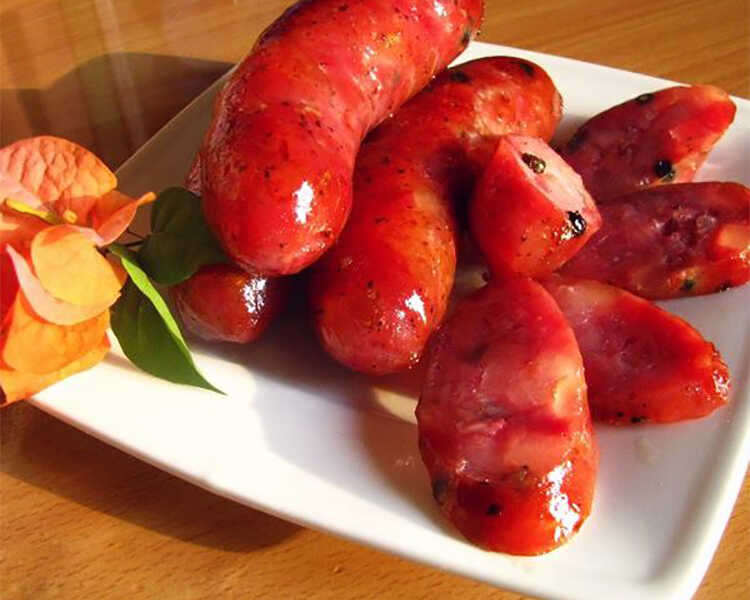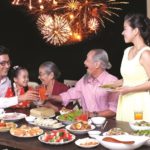Lap xuong (Chinese sausage) is a delicacy with roots in China that has become a beloved part of Vietnamese cuisine. This savory treat is made by grinding pork meat and fat, mixing it with wine and sugar, and then stuffing it into dry pork intestines to undergo natural fermentation. This process gives lap xuong its distinctive slightly sweet taste. For many families, the absence of this delicacy on the festive table would diminish the joy of the Lunar New Year celebrations.
1 Bringer of Luck and Fortune
 Bringer of Luck and Fortune
Bringer of Luck and Fortune
In the Eastern philosophy, red symbolizes luck and prosperity. Thus, it is no surprise that during the Vietnamese Lunar New Year, the color red is prominently featured, including the vibrant pinkish-red of lap xuong, symbolizing the consumption of good fortune.
Additionally, according to Chinese cultural beliefs, having money in the house during the New Year brings luck and wealth. Interestingly, the name “lap xuong” originates from the linked sausage’s resemblance to a string of red envelopes containing money. As such, Vietnamese families often include lap xuong in their ancestral offerings during the Lunar New Year festivities.
2 Symbol of Reunion
 Symbol of Reunion
Symbol of Reunion
This delicacy is intimately tied to the concept of family reunion during the transition from the old to the new year. Families gather together, savoring slices of delicious lap xuong with a warm glass of wine, accompanied by slightly sour pickled onions, and savory dried shrimp—a heartwarming tradition.
3 Timeless Tradition – Food Preservation
 Timeless Tradition – Food Preservation
Timeless Tradition – Food Preservation
In the past, lap xuong was primarily sold during the Lunar New Year season. As a result, every spring, households would purchase lap xuong for their own consumption and to offer guests, as it was considered an essential part of the celebrations. Lap xuong has long been a staple food item for many families. Most people are familiar with the image of mothers stocking up on lap xuong to store in the pantry, only to be taken out on special occasions or used as a key ingredient in various dishes. This tradition continues to this day, with lap xuong maintaining its presence on the traditional Lunar New Year feast table.
4 A Meaningful Gift
 A Meaningful Gift
A Meaningful Gift
Southern Vietnamese cuisine particularly favors lap xuong, incorporating it into everyday meals and special occasions alike. When choosing lap xuong as a gift, the only concern is not whether the recipient will like it but rather the quality of the product. And if you think lap xuong is only made from pork, think again! Today, creative variations feature additional ingredients, resulting in exciting options such as shrimp lap xuong and duck lap xuong. There are even fresh versions available, moving away from the traditional dried form.
Similar to the aforementioned beliefs, the red color of lap xuong signifies good fortune, and when given as a gift, it conveys wishes for prosperity and happiness. It is undoubtedly a thoughtful and meaningful present.
We hope that this insightful exploration of lap xuong has enhanced your understanding of this delicious delicacy. Beyond its presence on the traditional Lunar New Year feast table, lap xuong holds a deeper significance, symbolizing luck, prosperity, and the warmth of family gatherings.
luck-in-2021/’ title=’Unveiling the Meaning Behind New Year’s Harvest: Tips for Having Luck in 2021’>Unveiling the Meaning Behind New Year’s Harvest: Tips for Having Luck in 2021
Celebrating the start of the New Year, many customs and traditions come together in a joyous expression of good fortune. From harvesting the new year’s fortune to praying for fortune and luck, the humanistic meaning behind these practices remains as relevant as ever. But what is the origin and how can we properly partake in the harvest of the new year? Read on to learn more about this fascinating custom.






































